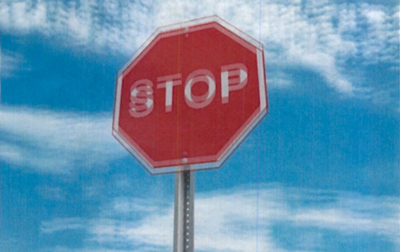 |
A standard contact lens evaluation typically runs the gamut and includes all necessary steps to properly fit a lens—from taking precise measurements to an analysis of the patient’s visual needs and then tailoring your patient-specific recommendations. We know it’s significant to patient satisfaction, and we treat it as such. Many eye care providers, however, would argue the contact lens fit follow-up is just as important as the initial evaluation. These sometimes-overlooked appointments are often critical to the success of contact lens wearers—and ultimately the success of your practice—by giving you the opportunity to adjust the prescription, check corneal health and ensure the patient is happy with their contact lens-wearing experience.
Of course, these appointments can drag on, and figuring out when or how to end them is a challenge. Some patients may be well-adjusted, long-term wearers of contact lenses and may only require slight changes. These patients may not need a follow-up, especially if using daily disposable contact lenses. On the other hand, some follow-up appointments come at a critical juncture, and determine the success of the fit. Thus, it’s important to make sure the patient understands why you are asking them to return, or else they may consider the visit unnecessary. The following instances are good examples of scenarios in which a contact lens follow-up can help increase the odds of success.
Torics and Specialty Lenses
Astigmatism-correcting lenses are a perfect example of a contact lens fit in which the follow-up visit is critical to the patient’s long-term success. If these lenses do not stay centered and stable in their rotation during daily wear, they can cause visual distortion and loss of visual clarity.
|
|

|
|
|
Fig. 1. An unstable astigmatism-correcting lens can cause visual distortion. |
This is especially true with higher amounts of astigmatism, where a minor misalignment will result in blurred or distorted vision. In one case, a highly astigmatic patient created an image of a stop sign as an example of what she sees while wearing toric contact lenses (Figure 1). Her follow-up appointment provided an opportunity to make changes in the axis to correct for the on-eye rotation. A simple increase in the axis by 10 degrees was enough to account for the left rotation of the contact lens.
Many specialty contact lens wearers, including those who wear gas permeable lenses, keratoconic lenses and hybrid designs, present fitting challenges because of corneal irregularities or a compromised ocular surface. In such cases, follow-up care is critical to assess corneal health and ensure comfort and visual clarity. For example, if a keratoconic contact lens is placing pressure on the cone area, increasing the sag will ensure clearance, prevent corneal irritation and likely decrease the risk of apical scarring.
Hardly Child’s Play
For first-time contact lens wearers, especially younger ones, the follow-up appointment is important both to evaluate whether the lenses are being handled properly during insertion and removal and to establish good long-term contact lens wear and care practices. Compliance is a major concern for children in particular, as many types of contact lens complications can temporarily limit a patient’s ability to wear contact lenses and even permanently affect ocular health. Thus, early education is key, and this visit provides the opportunity to further emphasize the importance of proper handling and care of both contact lenses and lens solutions. For example, many children do not understand the potential harmful effects of sleeping overnight in their lenses.
Of course, not every practitioner wants to offer contact lens fittings to children. Clinicians who choose to do so must take a patient-centered approach that will provide active pediatric patients viable vision correction options.
Double Take
Despite recent advances, presbyopia-correcting contact lenses remain a vastly underused modality, perhaps because wearers are more likely to present with other unique challenges in conjunction, and so typically drop out at a higher rate than younger patients.1
Taking the time to ensure a presbyopic wearer has the best possible range of clear vision will help avoid this abandonment. Many presbyopic wearers struggle with the loss of their near focus ability, but are unwilling to lose any loss of distance visual sharpness. Education on the fitting process up-front is critical to the overall success.
Recent improvements in both reusable and daily disposable soft multifocal contact lens designs have helped make the fitting process smoother. Variations in lens geometry between different designs offer a wide range of options, putting the onus on clinicians to be familiar with the various manufacturer fitting guides to change designs during a follow-up appointment when warranted. For example, if the patient is complaining of their near vision, many of the fitting guides will lead you down the right path for success with that specific patient.
An Ounce of Prevention
Contact lens patient discomfort can range from something as simple as inadequate cleaning habits to poor fit, resulting in lens awareness. Patients can become disillusioned about contact lens wear if their eye care professional is passive about providing specific wear instructions. Don’t wait for them to complain—schedule a follow-up appointment to determine any issues and make adjustments as necessary, before they become problematic.
1. Pritchard N, Fonn D, Brazeau D. Discontinuation of contact lens wear: a survey. Int Contact Lens Clin. 1999 Nov;26(6):157-162.


